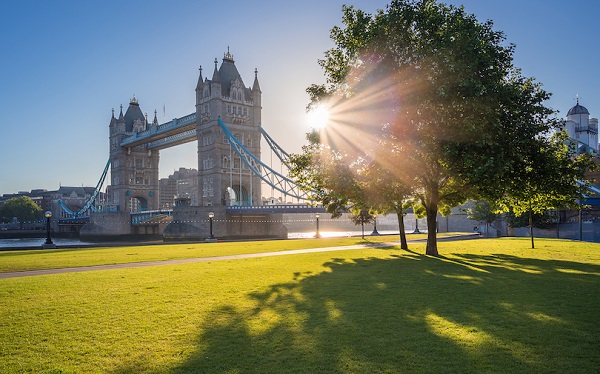Alberta
Alberta Covid-19: Alberta announces ban on visitors at care centres province-wide

Dr. Deena Hinshaw, Chief Medical Officer of Health for Alberta has ordered a province-wide ban on visitors that applies to all licensed supportive living, long-term care centres, continuing care facilities, licensed group homes, residential addiction treatment operators and other facilities licensed under the Mental Health Services Protection Act.
The amended public health order is part Alberta’s ongoing work to limit the spread of COVID-19 and protect Albertans. There are two exceptions with a health pre-screening; if a resident is dying or the visitor is essential for delivering care that cannot be delivered by staff.
Dr. Hinshaw said, “Residents of all continuing care sites are at extreme risk if exposed to COVID-19, and we are doing everything possible to ensure their safety. I know this will have a profound impact on the lives of those residents and their families; this is not a step that we take lightly. I’m asking all Albertans to reach out and support their loved ones through the phone, video and any other means possible.”
Alberta Minister of Health, Tyler Shandro added, “This order is an aggressive but necessary step to help limit the spread of COVID-19 and protect the health of vulnerable Albertans. Our government will support any action needed to protect the lives of residents at continuing care facilities across the province.”

Alberta Minister of Health, Tyler Shandro talks at a press release at the Legislature in Edmonton. Photo Courtesy/Government of Alberta
Family, friends and religious leaders will still be allowed to visit a resident who is dying. In these cases, only one visitor can enter at a time and they cannot interact with any other residents while in the building. Exceptions will also be made if an essential visitor is needed to provide specialized care for a resident.
Any visitor entering these facilities must undergo a health screening prior to stepping inside. This includes a temperature check and a questionnaire. Anyone sick will not be allowed into the building. Those who are well will be required to wear a mask or face covering during the time they are in the building.
This amended order builds on the restrictions implemented by Alberta Health Services on April 3rd , ensuring that all facilities in Alberta are following the same strict standards.
All other public health measures remain in place for continuing care facilities. This includes daily screening of staff, enhanced cleaning and other infection prevention control measures, and mandatory outbreak protocols that must be followed for all facilities.
As of April 7th, 5pm; There have been 1,373 cases of COVID-19 identified in the province. Of these cases, there are currently 42 people in hospital, 15 of whom have been admitted to intensive care units (ICU). There are now a total of 447 confirmed recovered cases. This includes 112 confirmed cases and 13 deaths at continuing care facilities. Access all of Alberta Government Covid-19 information at this link.
Alberta
Red Deer Justice Centre Grand Opening: Building access to justice for Albertans

The new Red Deer Justice Centre will help Albertans resolve their legal matters faster.
Albertans deserve to have access to a fair, accessible and transparent justice system. Modernizing Alberta’s courthouse infrastructure will help make sure Alberta’s justice system runs efficiently and meets the needs of the province’s growing population.
Alberta’s government has invested $191 million to build the new Red Deer Justice Centre, increasing the number of courtrooms from eight to 12, allowing more cases to be heard at one time.
“Modern, accessible courthouses and streamlined services not only strengthen our justice
system – they build safer, stronger communities across the province. Investing in the new Red Deer Justice Centre is vital to helping our justice system operate more efficiently, and will give people in Red Deer and across central Alberta better access to justice.”

Government of Alberta and Judiciary representatives with special guests at the Red Deer Justice Centre plaque unveiling event April 22, 2025.
On March 3, all court services in Red Deer began operating out of the new justice centre. The new justice centre has 12 courtrooms fully built and equipped with video-conference equipment to allow witnesses to attend remotely if they cannot travel, and vulnerable witnesses to testify from outside the courtroom.
The new justice centre also has spaces for people taking alternative approaches to the traditional courtroom trial process, with the three new suites for judicial dispute resolution services, a specific suite for other dispute resolution services, such as family mediation and civil mediation, and a new Indigenous courtroom with dedicated venting for smudging purposes.
“We are very excited about this new courthouse for central Alberta. Investing in the places where people seek justice shows respect for the rights of all Albertans. The Red Deer Justice Centre fills a significant infrastructure need for this rapidly growing part of the province. It is also an important symbol of the rule of law, meaning that none of us are above the law, and there is an independent judiciary to decide disputes. This is essential for a healthy functioning democracy.”
“Public safety and access to justice go hand in hand. With this investment in the new Red Deer Justice Centre, Alberta’s government is ensuring that communities are safer, legal matters are resolved more efficiently and all Albertans get the support they need.”
“This state-of-the-art facility will serve the people of Red Deer and surrounding communities for generations. Our team at Infrastructure is incredibly proud of the work done to plan, design and build this project. I want to thank everyone, at all levels, who helped make this project a reality.”
Budget 2025 is meeting the challenge faced by Alberta with continued investments in education and health, lower taxes for families and a focus on the economy.

Quick facts
- The new Red Deer Justice Centre is 312,000 sq ft (29,000 m2). (The old courthouse is 98,780 sq ft (9,177 m2)).
- The approved project funding for the Red Deer Justice Centre is about $191 million.
Alberta
CPP another example of Albertans’ outsized contribution to Canada

From the Fraser Institute
By Tegan Hill
Amid the economic uncertainty fuelled by Trump’s trade war, its perhaps more important than ever to understand Alberta’s crucial role in the federation and its outsized contribution to programs such as the Canada Pension Plan (CPP).
From 1981 to 2022, Albertan’s net contribution to the CPP—meaning the amount Albertans paid into the program over and above what retirees in Alberta received in CPP payments—was $53.6 billion. In 2022 (the latest year of available data), Albertans’ net contribution to the CPP was $3.0 billion.
During that same period (1981 to 2022), British Columbia was the only other province where residents paid more into the CPP than retirees received in benefits—and Alberta’s contribution was six times greater than B.C.’s contribution. Put differently, residents in seven out of the nine provinces that participate in the CPP (Quebec has its own plan) receive more back in benefits than they contribute to the program.
Albertans pay an outsized contribution to federal and national programs, including the CPP because of the province’s relatively high rates of employment, higher average incomes and younger population (i.e. more workers pay into the CPP and less retirees take from it).
Put simply, Albertan workers have been helping fund the retirement of Canadians from coast to coast for decades, and without Alberta, the CPP would look much different.
How different?
If Alberta withdrew from the CPP and established its own standalone provincial pension plan, Alberta workers would receive the same retirement benefits but at a lower cost (i.e. lower CPP contribution rate deducted from our paycheques) than other Canadians, while the contribution rate—essentially the CPP tax rate—to fund the program would likely need to increase for the rest of the country to maintain the same benefits.
And given current demographic projections, immigration patterns and Alberta’s long history of leading the provinces in economic growth, Albertan workers will likely continue to pay more into the CPP than Albertan retirees get back from it.
Therefore, considering Alberta’s crucial role in national programs, the next federal government—whoever that may be—should undo and prevent policies that negatively impact the province and Albertans ability to contribute to Canada. Think of Bill C-69 (which imposes complex, uncertain and onerous review requirements on major energy projects), Bill C-48 (which bans large oil tankers off B.C.’s northern coast and limits access to Asian markets), an arbitrary cap on oil and gas emissions, numerous other “net-zero” targets, and so on.
Canada faces serious economic challenges, including a trade war with the United States. In times like this, it’s important to remember Alberta’s crucial role in the federation and the outsized contributions of Alberta workers to the wellbeing of Canadians across the country.
-

 2025 Federal Election1 day ago
2025 Federal Election1 day agoStudy links B.C.’s drug policies to more overdoses, but researchers urge caution
-

 Business1 day ago
Business1 day agoIs Government Inflation Reporting Accurate?
-

 Environment2 days ago
Environment2 days agoExperiments to dim sunlight will soon be approved by UK government: report
-

 2025 Federal Election2 days ago
2025 Federal Election2 days agoConservatives promise to ban firing of Canadian federal workers based on COVID jab status
-

 International2 days ago
International2 days agoPope Francis Got Canadian History Wrong
-

 2025 Federal Election1 day ago
2025 Federal Election1 day agoCarney’s Hidden Climate Finance Agenda
-

 2025 Federal Election1 day ago
2025 Federal Election1 day agoWhen it comes to pipelines, Carney’s words flow both ways
-

 Censorship Industrial Complex2 days ago
Censorship Industrial Complex2 days agoIs free speech over in the UK? Government censorship reaches frightening new levels





